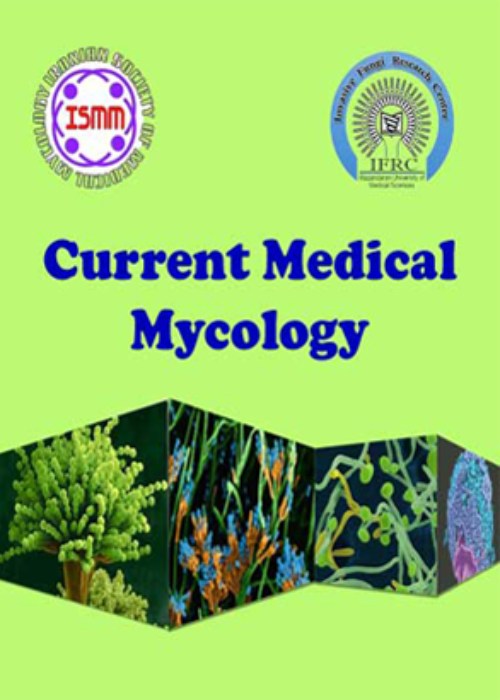In vitro antifungal activities of Euphorbia macroclada and fluconazole against pathogenic Candida species
Author(s):
Abstract:
Background and
Purpose
Candida species constitute an important group of opportunistic fungi, which cause various clinical diseases. Considering the resistance of some Candida species to conventional antifungal agents, treatment of such cases may be challenging and complicated. The purpose of this study was to evaluate and compare the antifungal activities of Euphorbia macroclada latex and fluconazole against different Candida species.Materials And Methods
A total of 150 Candida isolates including C. albicans (n=77), C. glabrata (n=28), C. parapsilosis (n=23), C. tropicalis (n=15), C. krusei (n=4), C. famata (n=1), C. kefyr (n=1) and C. inconspicua (n=1) were included in this study. In vitro antifungal activities of Euphorbia macroclada latex and fluconazole against these Candida species were evaluated, according to M27-A2 protocol on broth macrodilution method by the Clinical and Laboratory Standards Institute (CLSI).Results
Among 150 Candida isolates, 98 isolates (65.33%), i.e., C. albicans (n=41), C. glabrata (n=23), C. tropicalis (n=12) and C. parapsilosis (n=22) with minimal inhibitory concentration (MIC) ≤ 8 μg/ml were susceptible to fluconazole. Resistance to fluconazole was noted in 15 isolates, i.e., C. albicans (n=10), C. glabrata (n=2), C. krusei (n=1), C. kefyr (n=1), and C. inconspicua (n=1), with MICs of 64 µg/ml. The remaining isolates (n=37) including C. albicans (n=26), C. glabrata (n=3), C. tropicalis (n=3), C. parapsilosis (n=1), C. krusei (n=3) and C. famata (n=1) with MIC= 16-32 µg/ml showed dose-dependent susceptibility. The latex of Euphorbia macroclada was able to inhibit the growth of 30 out of 150 tested Candida isolates with MIC range of 128-512 µg/ml. These isolates were as follows: C. albicans (n=2), C. glabrata (n=4), C. parapsilosis (n=19), C. krusei (n=2) and C. tropicalis (n=3). Compared to other isolates, higher MIC values were noted for C. albicans and C. glabrata (512 µg/ml), respectively.Conclusion
The latex of Euphorbia macroclada showed notable antifungal activities against some pathogenic Candida species. Therefore, it can be potentially used as an alternative antifungal agent in future. However, further research is required to identify its active components. Keywords:
Language:
English
Published:
Current Medical Mycology, Volume:1 Issue: 2, Jun 2015
Pages:
7 to 12
magiran.com/p1563808
دانلود و مطالعه متن این مقاله با یکی از روشهای زیر امکان پذیر است:
اشتراک شخصی
با عضویت و پرداخت آنلاین حق اشتراک یکساله به مبلغ 1,390,000ريال میتوانید 70 عنوان مطلب دانلود کنید!
اشتراک سازمانی
به کتابخانه دانشگاه یا محل کار خود پیشنهاد کنید تا اشتراک سازمانی این پایگاه را برای دسترسی نامحدود همه کاربران به متن مطالب تهیه نمایند!
توجه!
- حق عضویت دریافتی صرف حمایت از نشریات عضو و نگهداری، تکمیل و توسعه مگیران میشود.
- پرداخت حق اشتراک و دانلود مقالات اجازه بازنشر آن در سایر رسانههای چاپی و دیجیتال را به کاربر نمیدهد.
In order to view content subscription is required
Personal subscription
Subscribe magiran.com for 70 € euros via PayPal and download 70 articles during a year.
Organization subscription
Please contact us to subscribe your university or library for unlimited access!


